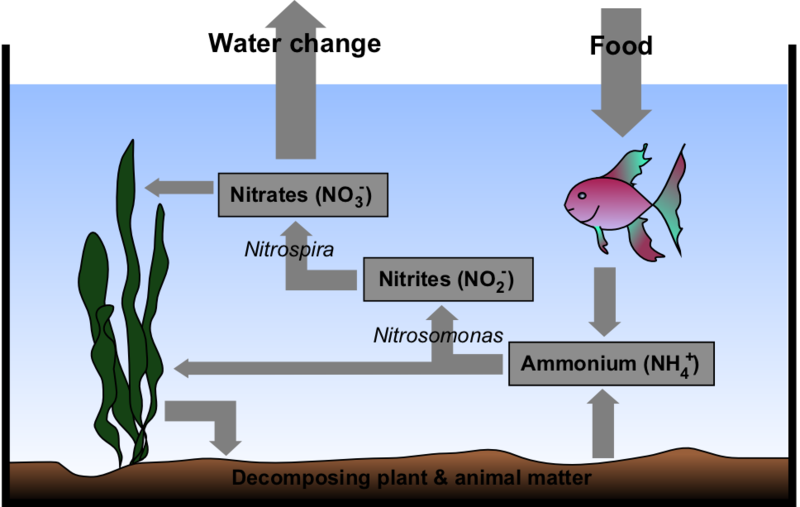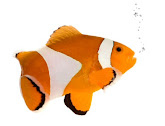The nitrogen cycle is by far the most important factor in successful fish keeping without it keeping fish alive for long periods would be difficult if not impossible. Like all living creatures fish give off waste and more than 50% of that waste is in the form of ammonia, the majority of which is secreted from the gills the rest is excreted as fecal matter, decaying plant matter and rotting uneaten food are other sources of ammonia, this ammonia is very toxic to fish and must be broken down or removed from the water.
In nature the large volumes of water per fish take care of diluting ammonia to miniscule proportions, but unfortunately in an aquarium the volume of water per fish is relatively small so ammonia levels can rise rapidly.
Fortunately for the aquarist this is where the nitrogen cycle comes to the rescue, living in the filters are two types of bacteria, the first is nitrosomonas it feeds on ammonia converting it to nitrite (also toxic to fish), nitrite is consumed by a secondary bacteria nitrobacter and converted to nitrate a relatively non toxic compound and the end product of the biological filtration process, nitrate levels will continue to rise unless removed by water changes or it is utilized by living plants.
Now you can’t just put a filter in your tank and expect all this to happen straight away, it takes time to establish good colonies of these bacteria, nitrifying bacteria are present everywhere (in the air) so once there is a source of ammonia it will only be a matter of time before a colony of bacteria is established. The best way to get small amount of ammonia into your aquarium is to add one or two hardy and inexpensive fish. The process of building up good bacteria levels in filters takes 2 to 6 weeks, at temperatures bellow 19 decrease Celsius the process takes much longer, under optimum conditions it takes 15 hours for a bacteria colony to double in size.
During the process ammonia levels in the aquarium will rise then suddenly fall as nitrite-forming bacteria take hold and multiply, the same applies for the nitrate-forming bacteria, nitrite levels will rise as the continually produced ammonia is converted into nitrite, as before these levels will suddenly drop as nitrate-forming bacteria take hold and multiply, now nitrate levels will begin to rise and should be controlled as mentioned before.
It is important to monitor ammonia, nitrite and nitrate levels not only when setting up a new aquarium but on a regular basis, a rise in ammonia or nitrite levels indicate that the filter is clogged and due for cleaning, if these level don’t drop after the filter has been cleaned correctly the filter is to small for the fish load in your aquarium. Excessive nitrate levels indicate the tank is due for a water change.




